Yes, after skipping issuing an update towards the end of last month, we are back with a combined March & April little blog about what we have been up to with building our jet hydroplane Longbow and associated adventures. Put the kettle make yourself a brew and grab a biscuit to have a read as follows.
Well firstly it was comforting to be asked where is the March update from a number of folk following our little project, so we must be doing something right to keep you all interested.
As a bit of an explanation as to why we didn’t issue a blog last month; if the year for us had not got off to a bad enough start with our newborn granddaughter Annabelle’s issues, last month we have had four close relatives / dear friends some of whom have been involved with our project from the outset; having life changing / life terminal events one after the other. I am not going to go into details herein but that news hit us pretty hard such that I hope you will appreciate doing anything on the boat was the last thing on our minds. It just felt like everyone I knew was having major health issues such that I was thinking of changing my name to Jonah and to go out looking for a whale. Anyway in amongst all of that it was nice to receive some good news by way of my youngest daughter Jenny expecting a baby towards the end of the year.
That in turn took me back to thinking about when my children, my wife and I were for a time heavily involved with helping Bill Smith in pulling Bluebird K7 apart and going looking for bits of it still in Coniston Water from 2005-2008. The following photos show my two youngest kids Jenny and Robert enjoying themselves with what their crazy dad and his friend Bill were doing at the time and them presenting Donald Campbell’s daughter, Ladies Outright World Water Speed Record breaker Gina Campbell QSO with a bouquet of flowers to celebrate Bluebird’s frame being stitched back together by professionals of The Welding Institute (TWI) at PDS premises in Nelson, Lancashire.
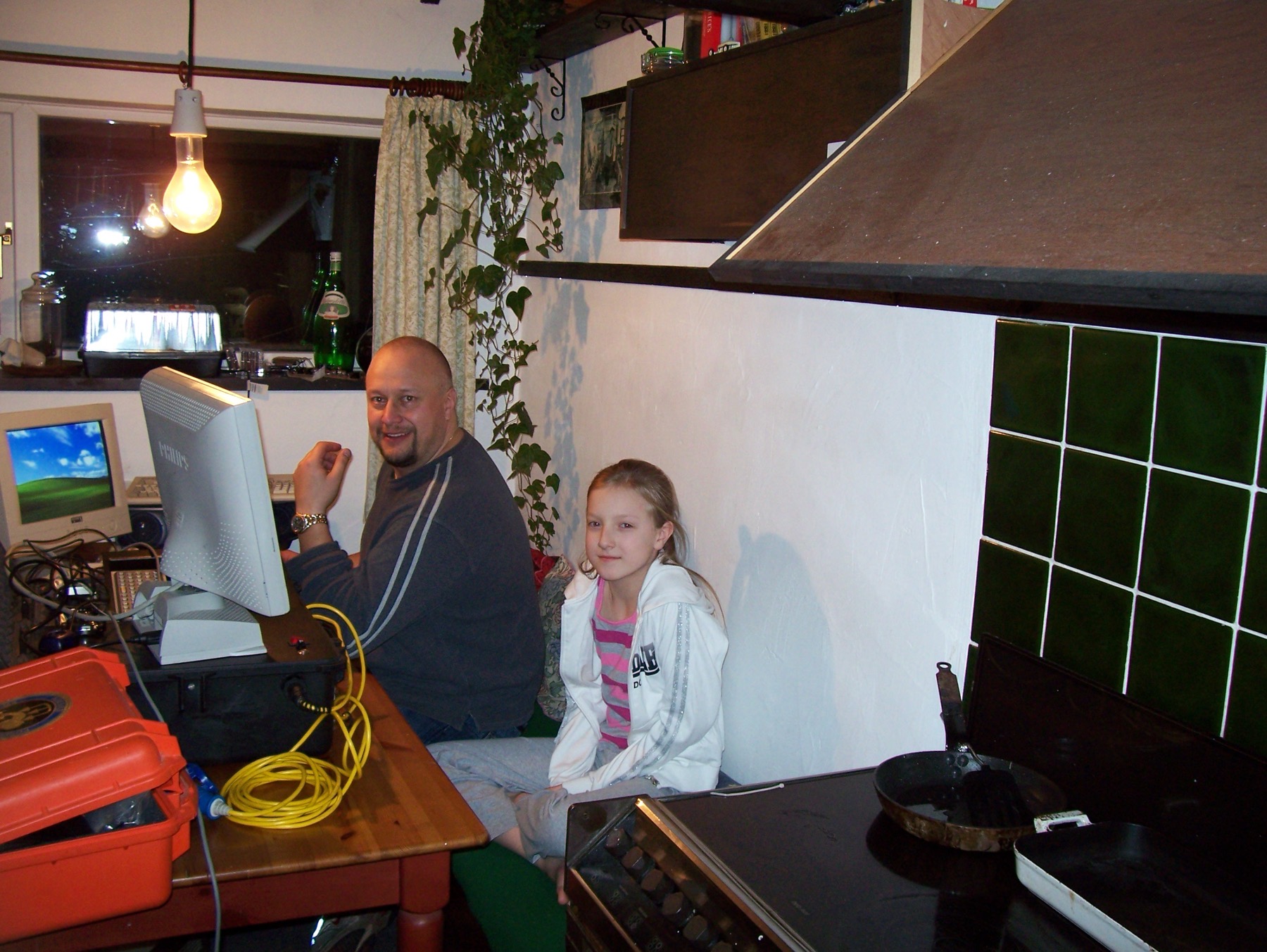
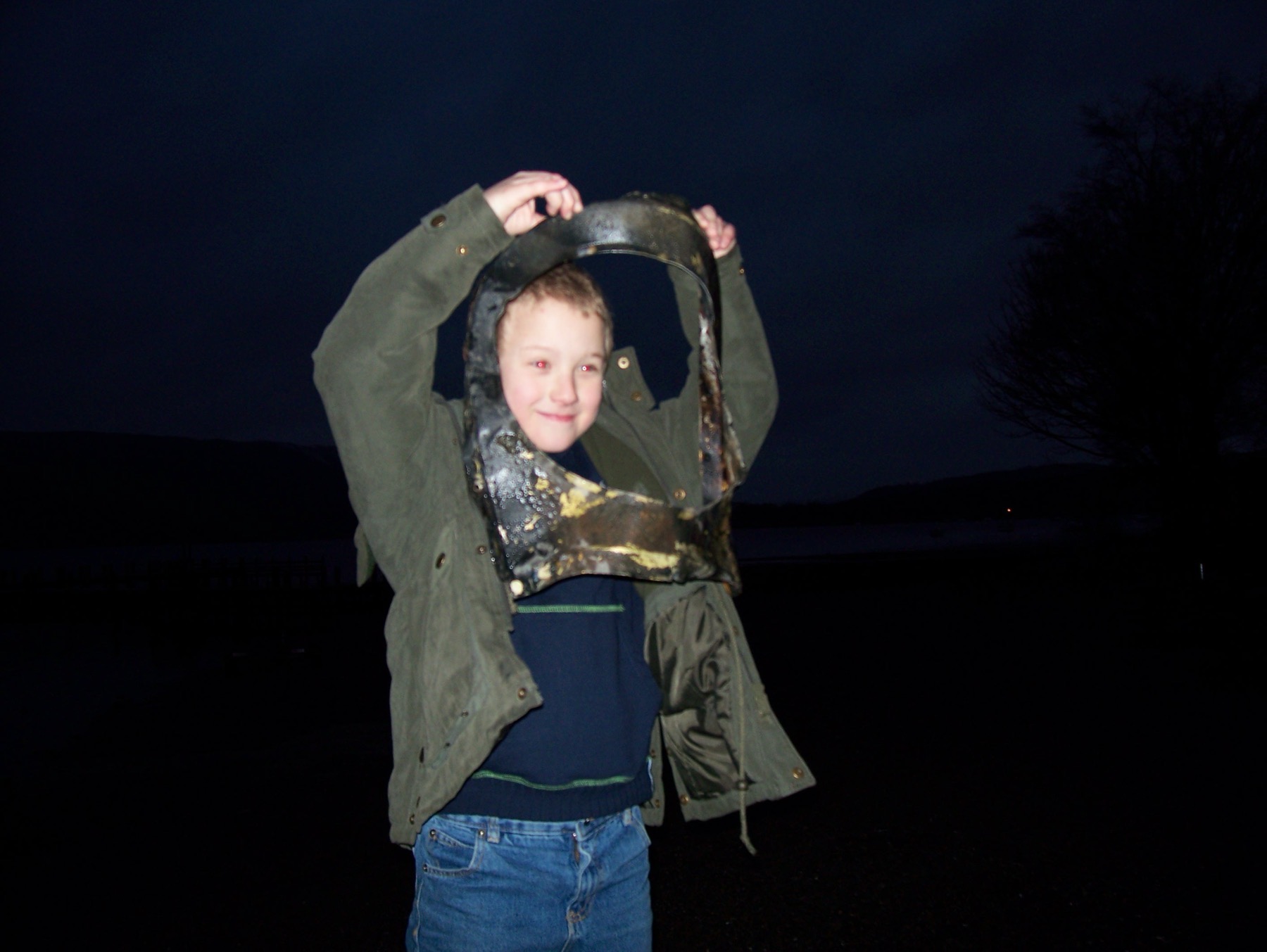
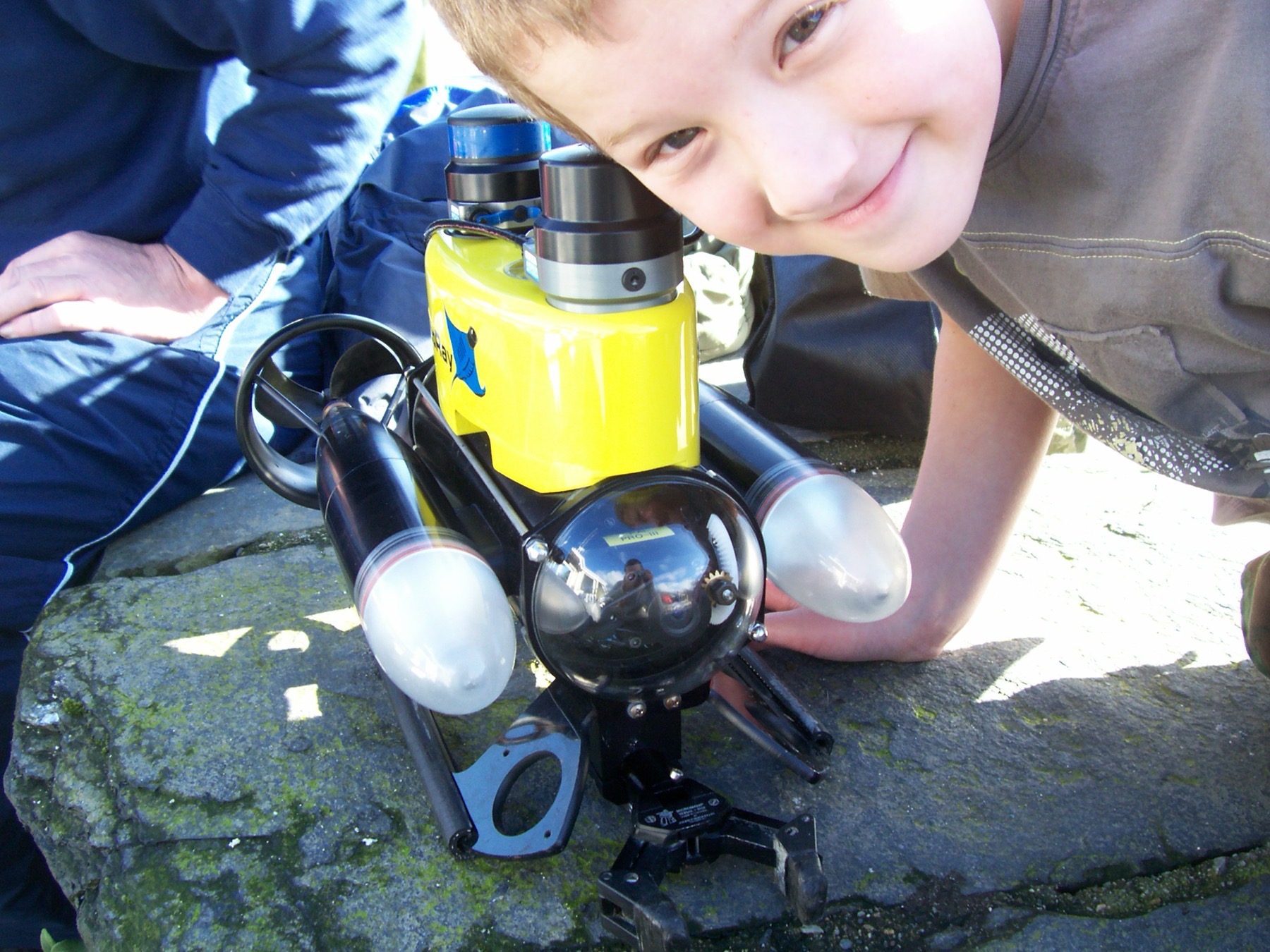
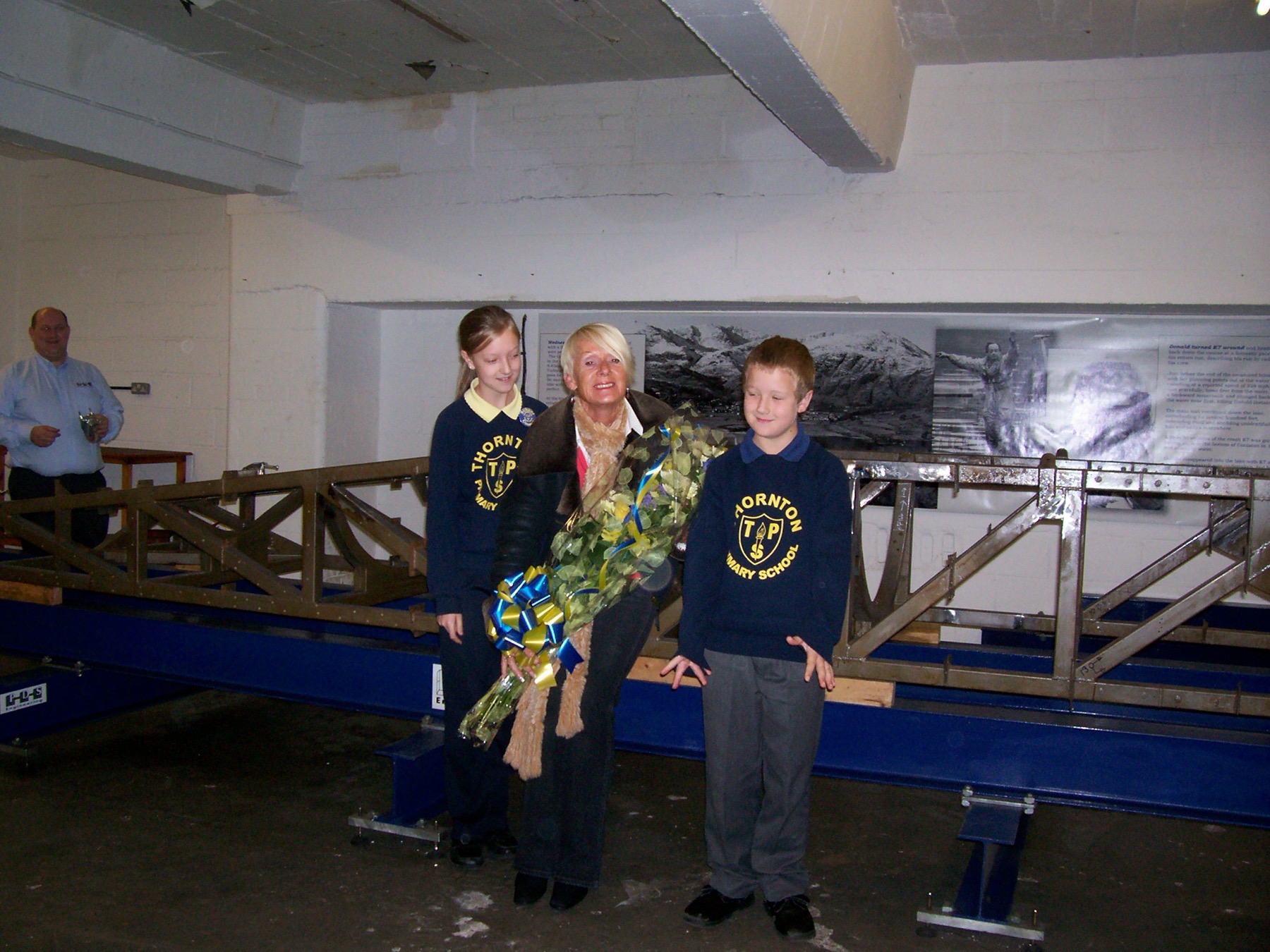
Gina and I were talking the other day and I said you do realise Bluebird was built from scratch in just under two years in Lancashire. That her dad then had her for 11 years during which he achieved seven Outright World Water Speed Records and iconic status. After recovery from Coniston by Bill, Bluebird has been up in North Shields having the damaged bits taken off and put back by a string of volunteers from all walks of life, myself for a time included, for 23 long years. Then from there last month being brought back to Coniston which used to be in Lancashire at the time of her father’s accident.
To put that latter timeframe into perspective my two little kids in the photos shown previously are now all grown up, they each have their own houses with their partners and now Jenny will be having her own child later this year.
When we heard that Bluebird was coming back to Coniston my son Robert made himself available to come and witness her journey along with my wife Gill. I also got in touch with my pal Neil who has previously taken some stunning onboard footage of military aircraft such as the Vulcan and Lancaster in flight; to see if he was available to do some on board video footage of Bluebird’s return to Coniston. Neil very kindly agreed to bring all his equipment along for the day and the following photo shows my son Robert and Neil fitting the cameras to the boat and transport lorry.
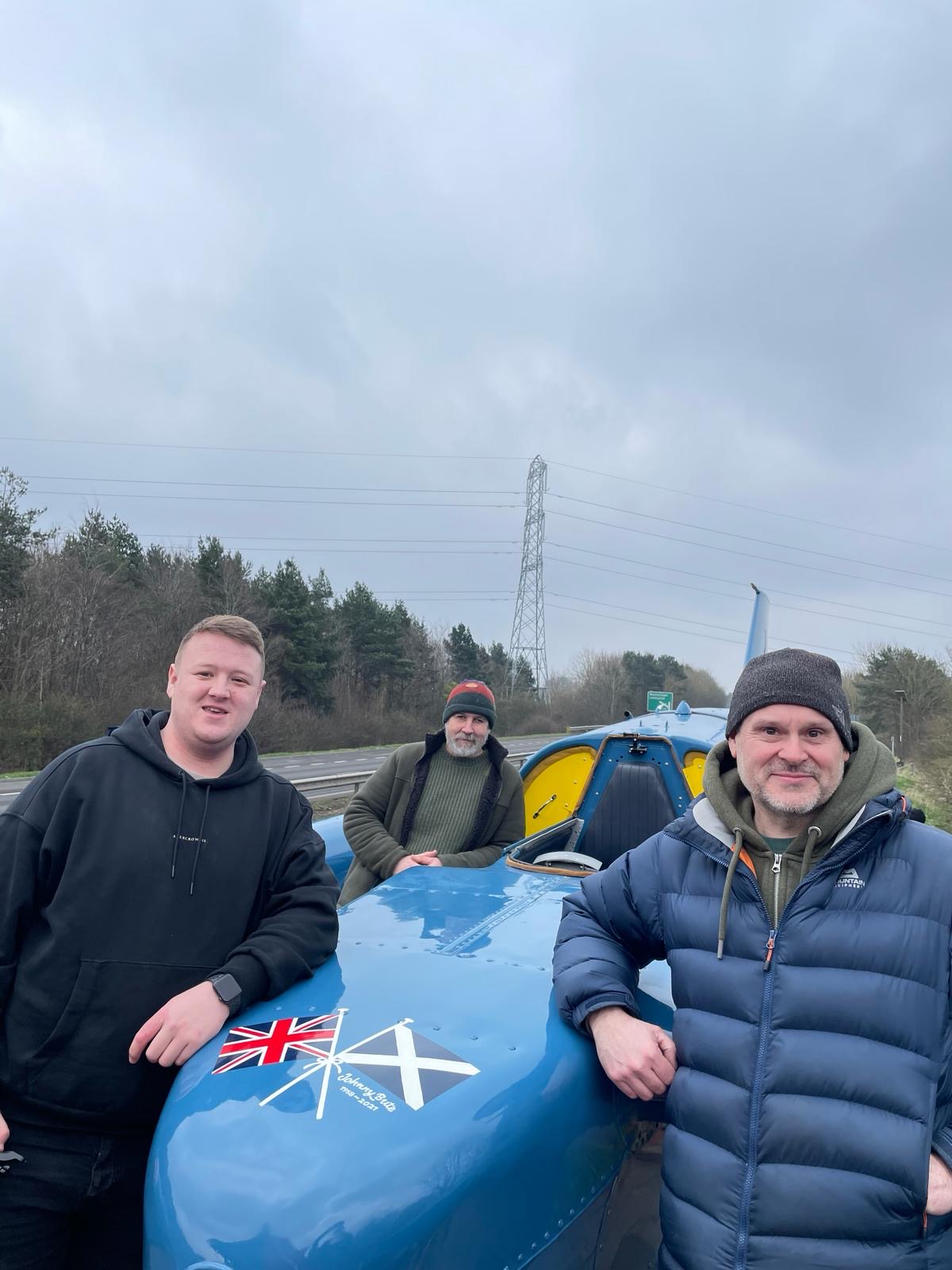
I then hopped into Neil’s car to do some of the additional footage from Shap hillsides and motorway bridges, etc, whilst Gill and Robert followed behind Bluebird in our car for what was to be a very memorable day. Here we all are as we took a break in the journey at Tebay Services:
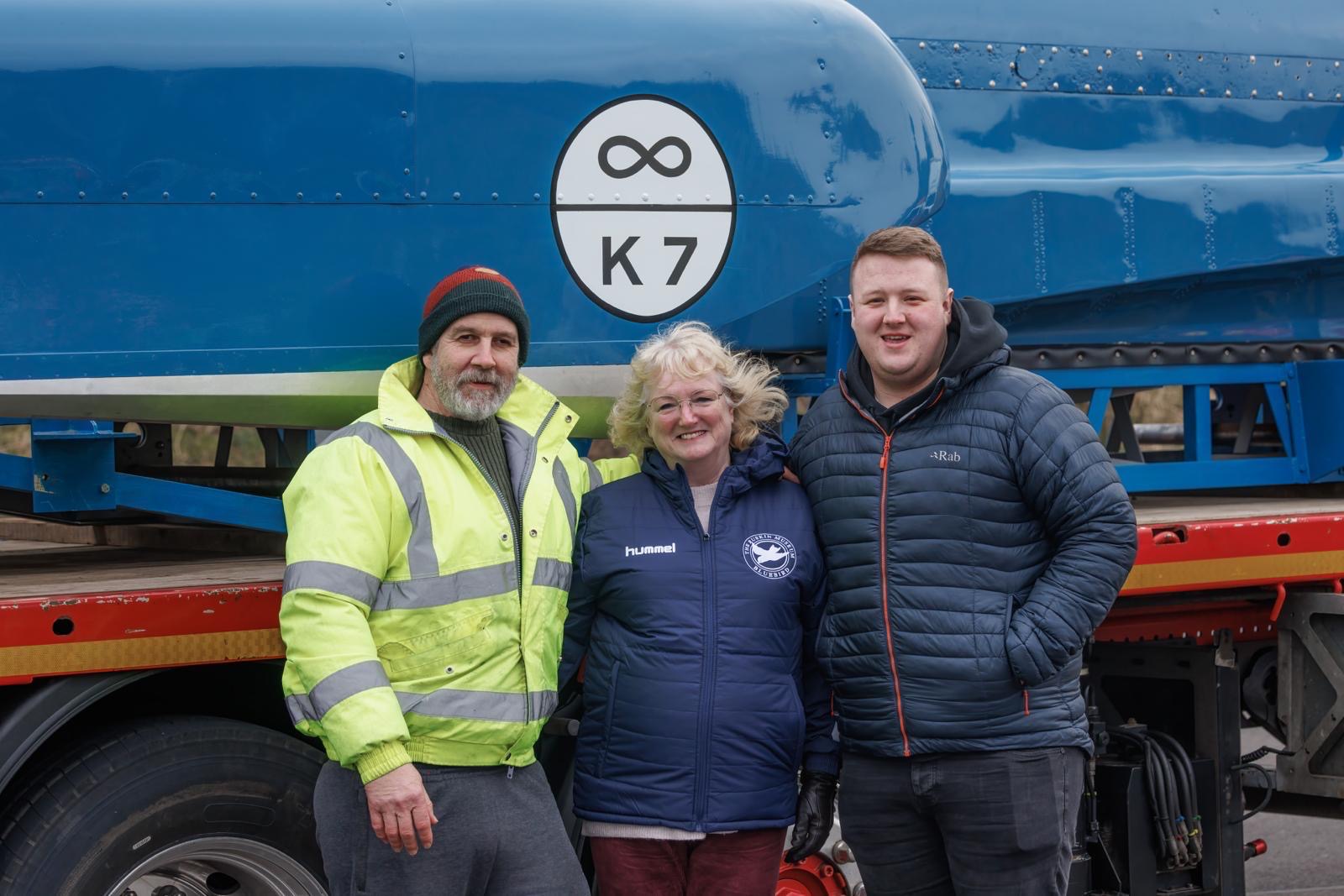
It was amazing to see folk of all ages turn up in the numbers they did along the way and as we got into the home stretch at Torver it was quite emotional to see the crowds with the blue flares and banners welcoming her back as we then proceeded down the road with a quick stop at the side of Coniston Water and if Bluebird has a soul then what must she have been thinking as her bow faced the water where she had seen triumph and tragedy, the sun on the fells and with the public, the Nation who have taken her to their hearts.
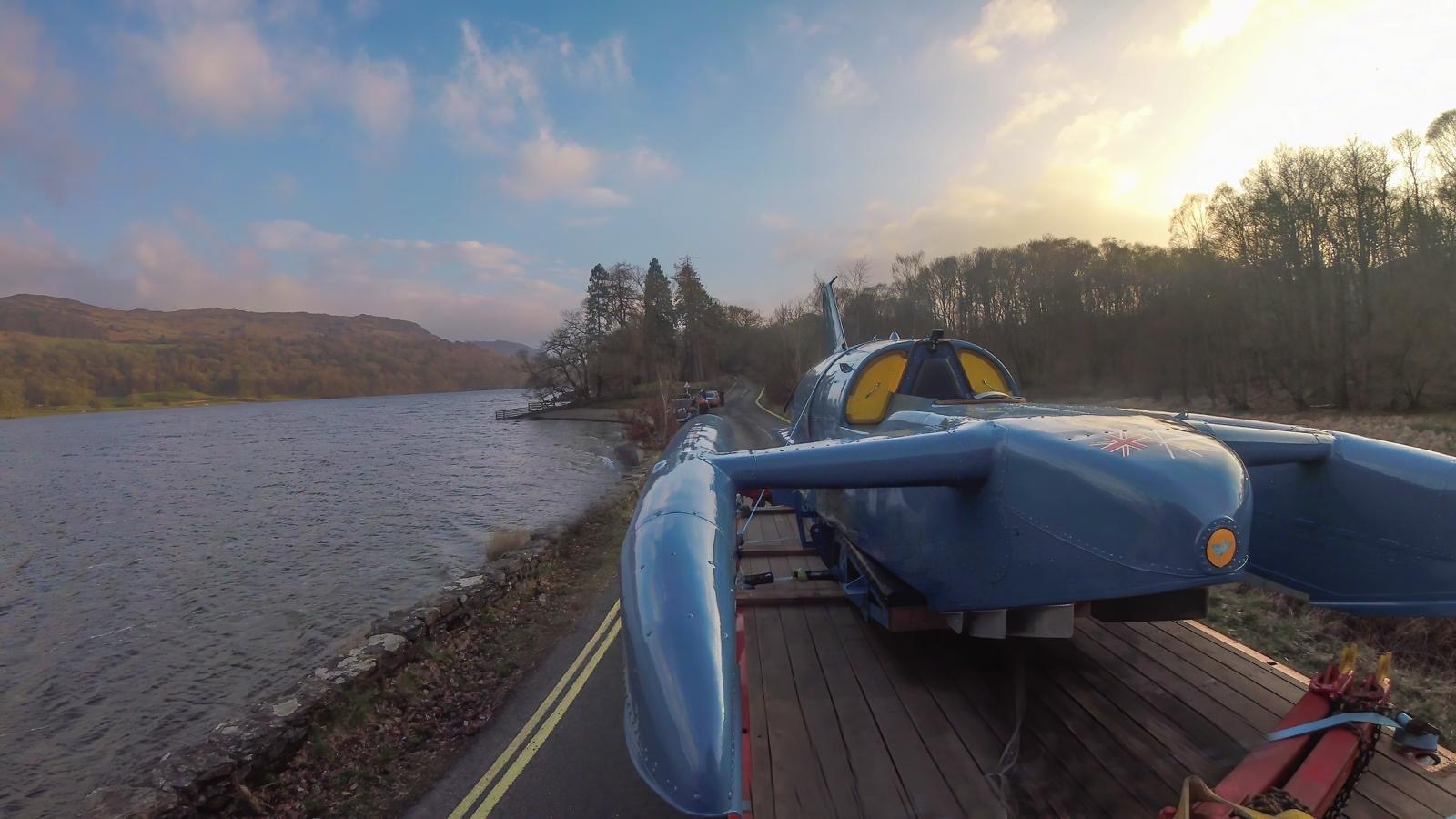
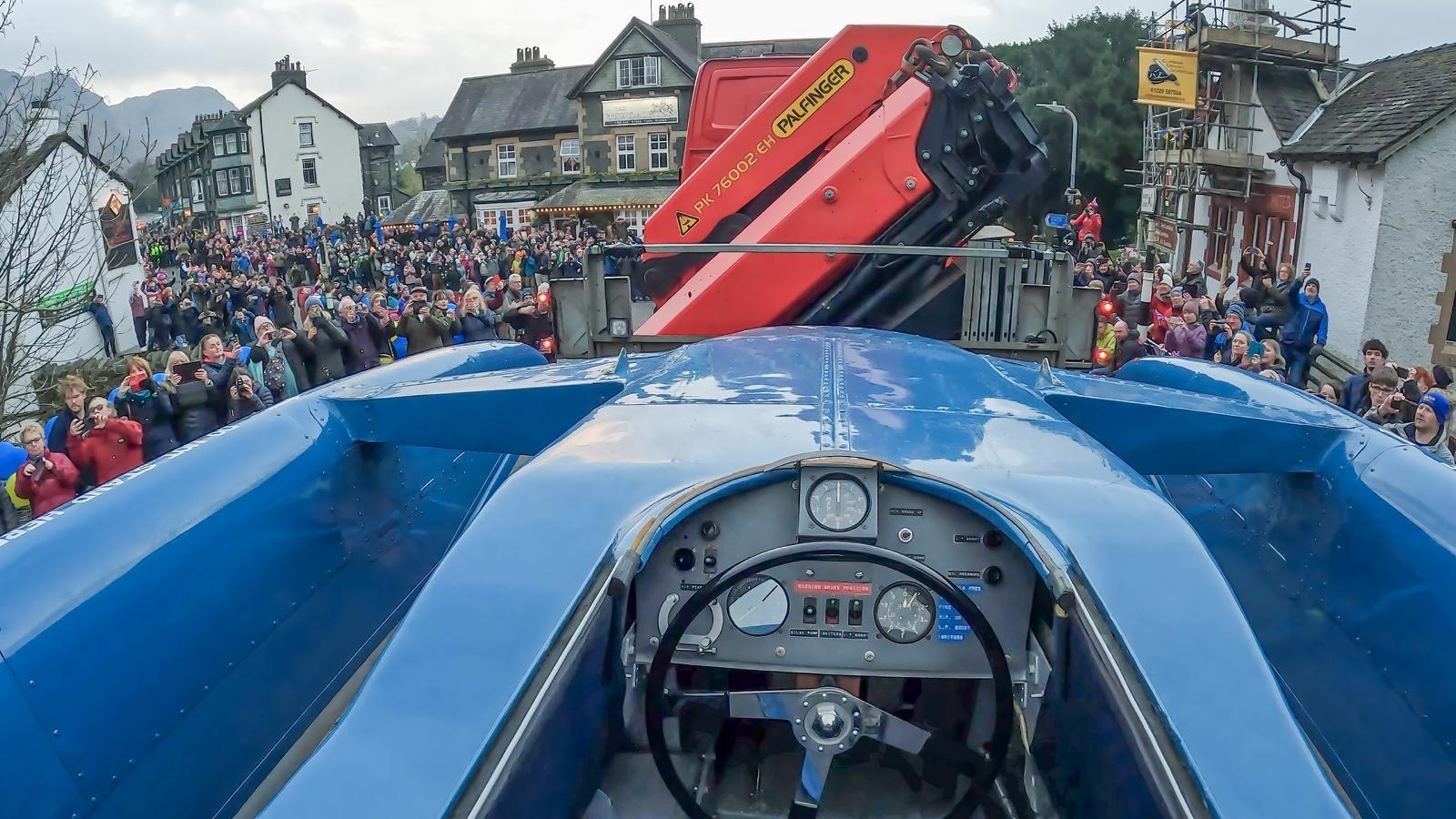
The village of course was absolutely packed with well wishers for the occasion as I picked out from the crowds a few of the faces of those I have known for so many years. The hauliers did an amazing professional job of the whole collection and delivery of the craft to the Ruskin Museum, staying to the end until she was safely put into her specially built wing to house her for public viewing when not out doing public displays upon Coniston Water, which the Museum are firmly committed to doing. The following day we took the engine covers off at the Museum to make an initial assessment of what work lies ahead to make that happen but that is a story for a future update.
Neil’s superb video of Bluebird’s return journey he has edited together is available to view online from the following link:
I fully appreciate since she was first built Bluebird has had, the very best of times and equally the very worst of times. She now begins a new chapter in that eventful life, so if you have not done so already please make the effort to go and see her, touch her and admire her and the outstanding achievements of her brave pilot Donald and of everyone who has given so much time and effort to put her back together again. Above all I think of Donald, a man with charisma in spades, a twinkle in his eye and not surprisingly an absolute hero of mine and so many for sure.
So once that little bit of excitement last month had died down and after all the stress with the health of family and friends previously mentioned, we have not been completely idle when it came to Longbow. In amongst all this wind and rain we did manage to get a sunny day to pull the boat out on her trailer and place into her the buck for the driver cockpit / capsule. For those that are unsure what I mean by ‘buck’ it is a mould for forming a composite shape from. Our composites design engineer Paul Martin had wanted some measurements in relation to the cockpit with it positioned in the hull for his calculations that he is working upon.
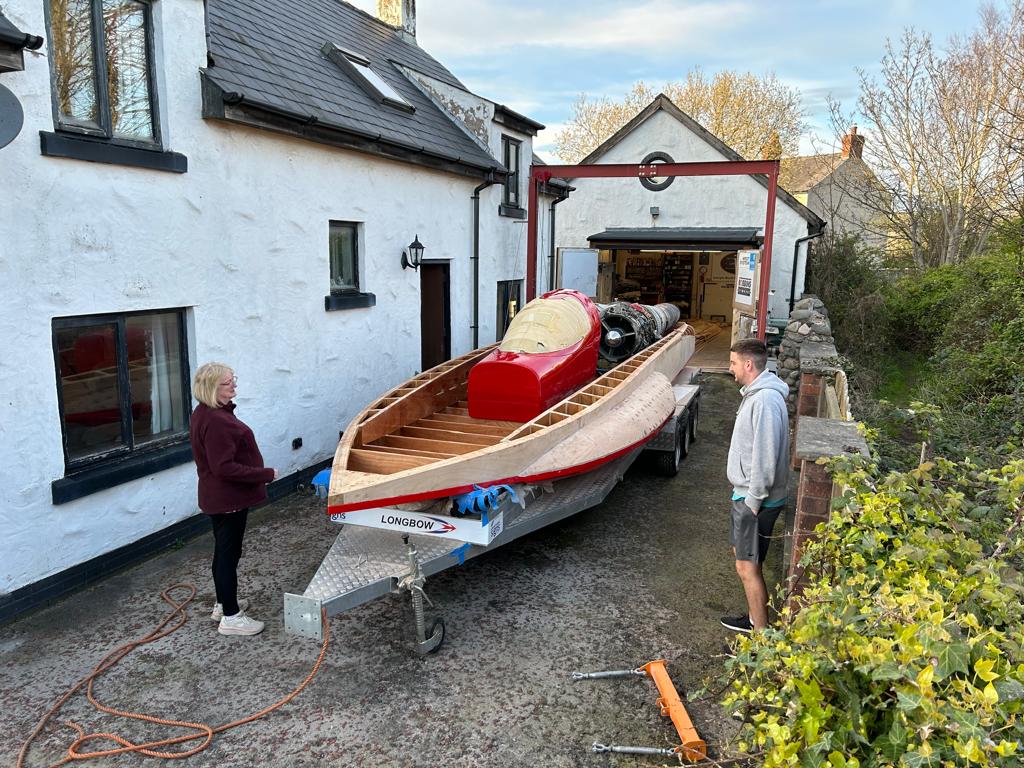
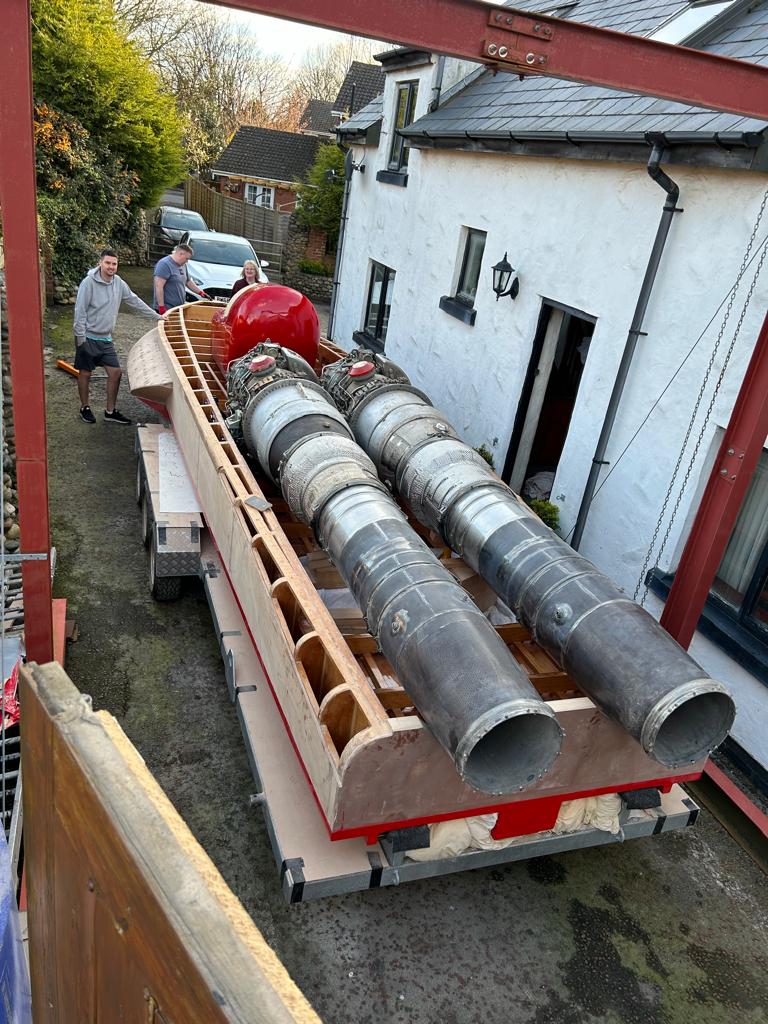
Before folk get too excited or start criticising what they are looking at, this mould is not the final shape that the cockpit will be and consequentially neither is it the finished size of it either. What it has allowed us to do however is have a hands on three dimensional starting point for a cockpit in the hull that we can then play about with under Paul’s guidance to hopefully come up with a satisfactory design solution. Until we get this design of the cockpit / capsule finalised we are rather in limbo as you may appreciate so much else of the craft is built around that area of the boat. For example, the air intakes, where the fuel tanks are going to be positioned and not least the steering arrangement.
Whilst we have done drawings for the rudder itself, another little headache is to choose what type of steering would be best suited to use in our particular case.
Just as a quick run through there are various options for steering of Longbow available to us and some of these not only mirror other boats they also mirror various aircraft too. A brief description of the main options are as follows:
In the first instance there is hydraulic steering which for example a lot of offshore very fast and very powerful powerboats use. Hydraulic steering is also found in aircraft. This is where you have an electric or engine driven pump that upon moving the steering wheel then moves fluid down pipes that in turn moves a piston that pushes or pulls the rudder arm in one direction or another. The system is available off the shelf and typically comes with a manufacturer warranty. It also has the advantage of there is flexibility where the pipes carrying the hydraulic fluid can be positioned as you please to pass through what might be considered an awkward pathway to run some of the other steering systems described herein. Also if you have a partial hydraulic fluid leak in the system you will likely still have some degree of steering remaining to bring the craft safely to a stop.
The primary downside to hydraulic steering is the lack of ‘feel’ for the driver of the craft as to what the rudder is actually doing during certain speed ranges / water conditions. When you are driving the boat a lot of it is done by the seat of your pants and many will argue that feedback through the steering wheel is an essential part of that for this and many other high speed craft. Also if there is any air in the system or leakage there can also be issues of failure to return to central rudder position and some degree of backlash, sometimes referred to as lash, play or slop in the system that can result in rudder flutter especially at high speed. A photo courtesy Franklin Ratliff of a hydraulic system used on Craig Arfon’s jet hydroplane is shown below:
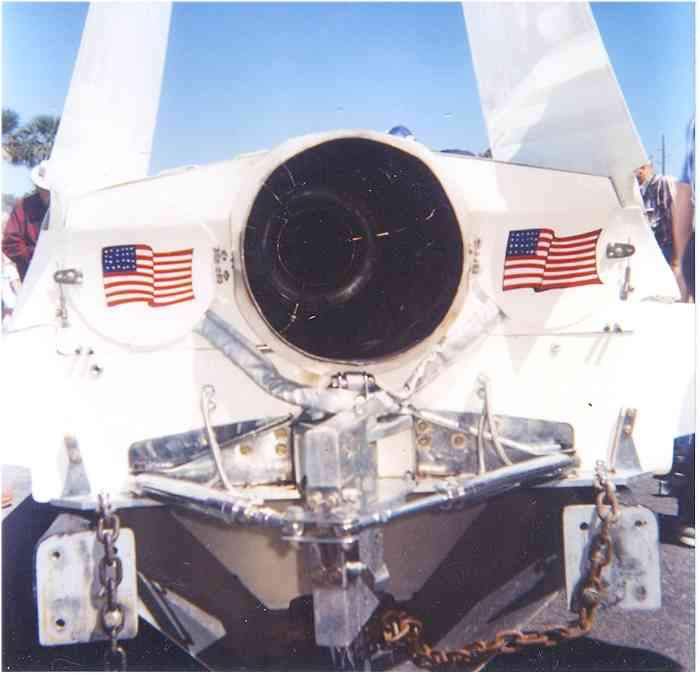
There is ‘fly by wire’ steering which again is used in aircraft and is a system of sensors that convert movement of the steering wheel into electrical signals that pass along wiring down the side of the hull where those electrical signals are then converted into movement of a hydraulic ram to move the rudder. Whilst there is flexibility with the system it probably the most expensive to install and again there is no ‘feel’ to what the rudder is doing.
There is a steering system often referred to as ‘teleflex’ which typically uses a steering box / rack and pinion arrangement at the cockpit end to push and pull a single cable within an outer sheath down one side of the hull to the rudder arm. There are a considerable number of boats that use this system for ease of installation and the system is shown below fitted to K777:
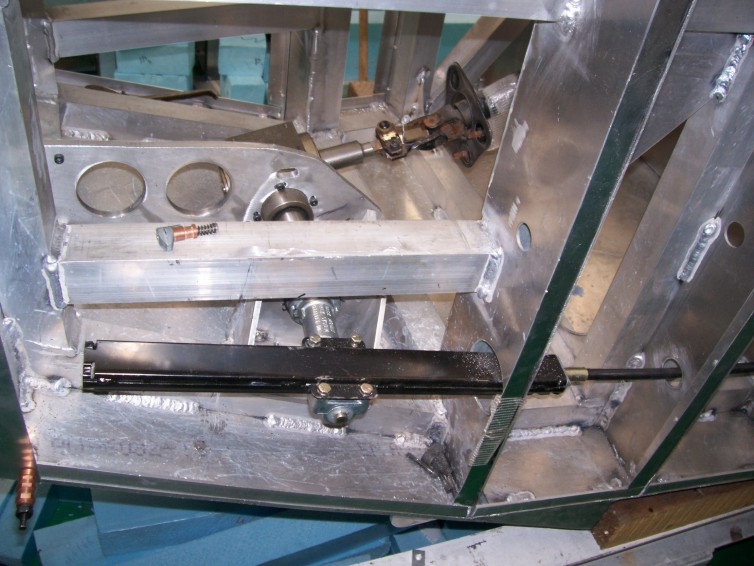
Bluebird, along with some historic unlimited hydroplanes and some drag boats use a steering box attached to an arm that in turn is attached to a long hollow steel tube running down one side of the boat to move an arm at the other end of the boat that in turn operates the rudder. Push / pull rods are also used in aircraft. Because the steering tube runs down one side of the boat this system as in the case of Bluebird lends itself to rudders that are offset, that is to say those that are not central to the rear of the boat but with various linkages a solution can be found to central rudder type configurations. Photo of Bluebird’s steering shaft shown below running along the side of the hull through a series of bearings:
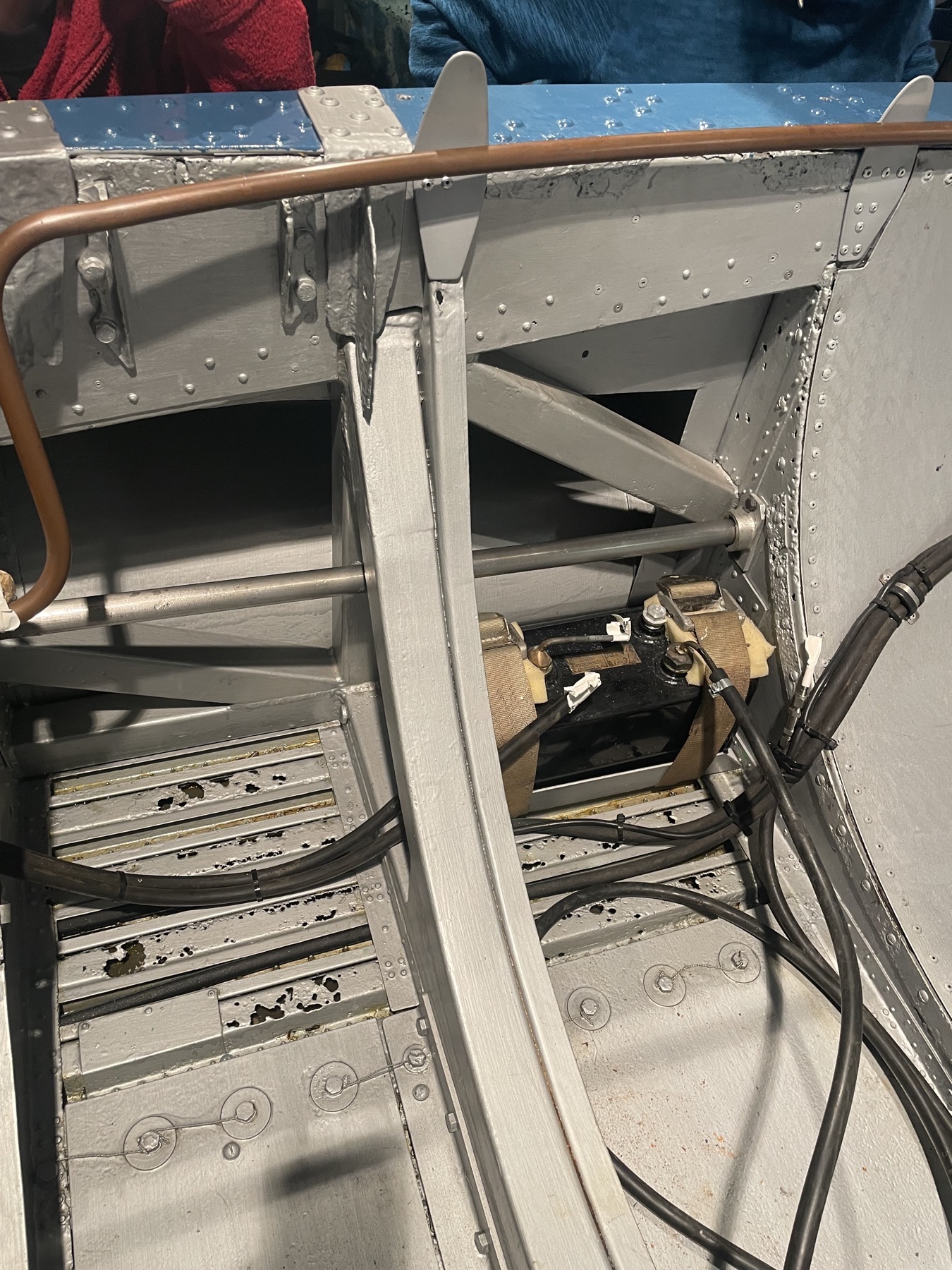
However the more linkages there are in the system the greater the potential for backlash / rudder flutter and the greater the risk of linkage failure with resultant total loss of steering.
Spirit of Australia currently the fastest boat in the world, plus Dave Warby’s jet hydroplane SOA2 and many race boats including modern unlimited hydroplanes use a system of steel rope that through a series of pulleys runs from steering wheel to rudder quadrant. Cable and pulleys is also used in aircraft too. Properly installed the system works very well and has good ‘feel’ from a driver’s perspective as to what the rudder is doing. Downsides can be difficulty of routing the cables and they need to be re-tensioned periodically as they stretch or contract with changes in temperature. Also if a pulley fails there is a total loss of the steering. Photo of Dave Warby’s cable steering system shown below:
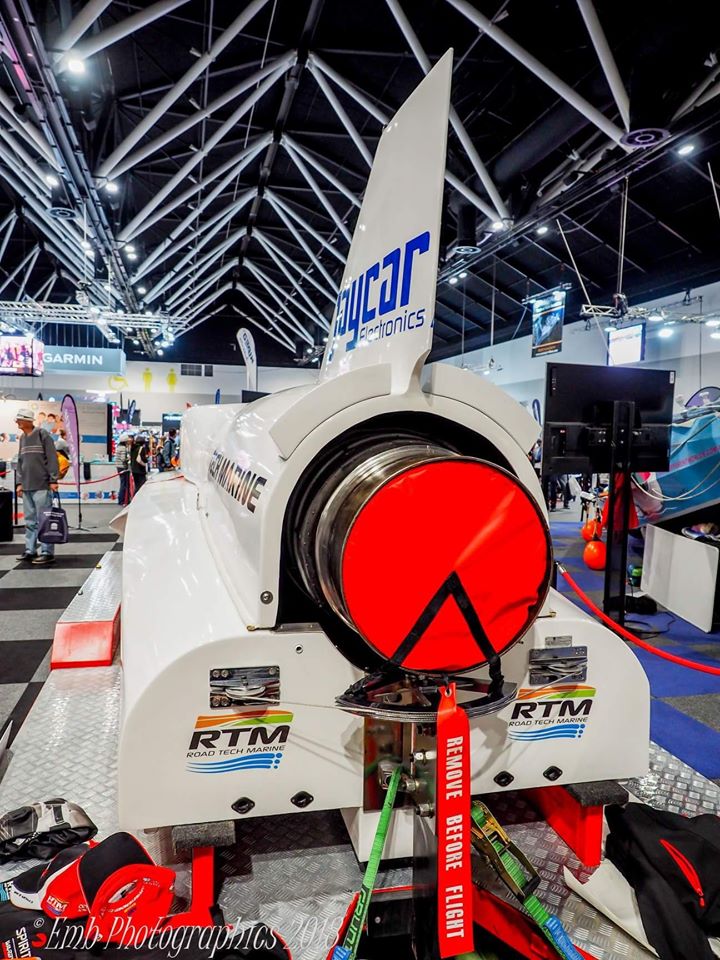
Everyone I have consulted with including Dave Warby, offshore and inshore hydroplane racers and boat builders / designers, powerboat governing body officials, appears to have a different view and recommendation of what type of steering system they personally prefer. With Longbow due to the length of the hull, the twin engine layout and the vertical stringers that run along each side of the boat not being parallel to each other but curved outwards, there are some difficulties with regards to designing a system that will be the most appropriate for our particular case.
Next month should see our good friend Dave Warby and his team back at Blowering Dam for more development testing of his jet hydroplane Spirit of Australia II to make a credible attempt upon the Outright World Water Speed Record to be the fastest boat in the world. We wish Dave and his team all the very best and good weather during his forthcoming time at the dam and we will report back as to how he gets on with our May month end update.
Well that is our news up to date folks as I leave you pondering over which steering system you would opt for with Longbow and the happy news that Bluebird is at last back at Coniston for all the world to come and see. If you have not done so already please sign up to follow us on Facebook with building of our jet hydroplane Longbow that when complete our driver RAF pilot Flt Lt David-John Gibbs will be testing upon lakes and lochs within the U.K.
